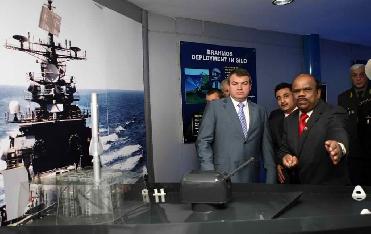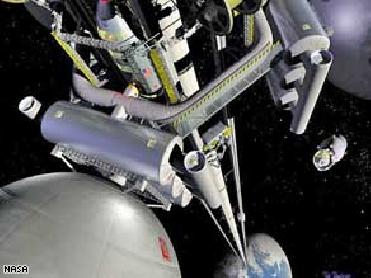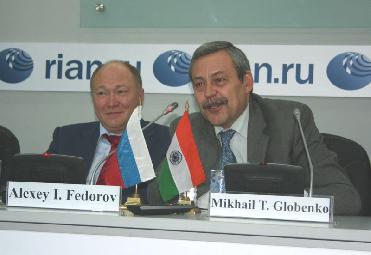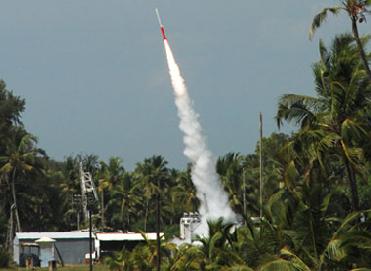
Dr A Sivathanu Pilai with the Russian defence minister during the latter's visit to India last week
KOCHI (PTI): The Defence Research Development Organisation (DRDO) hopes to develop an indigenous Air Independent Propulsion (AIP) submarine in four to five years, chief controller, Research and Development, Dr A Sivathanu Pillai has said.
Research and development work was going on at the DRDO Naval Material Research Laboratory (NMRL) in Mumbai to develop hydrogen-based fuel cells for the diesel-powered submarines, Dr Pillai told media persons here.
"NMRL already has developed number of fuel cells," Pillai, who was at Trikkakara near here in connection with a national symposium at the Naval Physical and Oceanographic Laboratory (NPOL), said.
Diesel power submarines will have to surface everyday for air, while the hydrogen-based technology is new and presently not operational anywhere in the world. "It is being developed by one or two countries. We are also going to develop that technology and that will be installed in the diesel submarines," he said.
The hydrogen based technology could enable submarines operate for long duration, may be 20 to 25 days under water, he said.
To a query, he said while Pakistan got AIP developed by France last month under the deal to purchase the Agosta submarines, India would be able to develop the technology indigenously.
India may also go in for AIP system from France or some other countries for the six submarines that are being constructed at Mazgaon. "But, we are not interested in that system and want a better system that is based on hydrogen," Pillai said.
"We have not decided whether we will develop alone or jointly with another country. We are exploring all possibilities," Pillai said. He said work was also going on at Naval Science Technology Laboratory (NSTL) on unmanned underwater vehicles capable of detecting and destroying mines.
Some tests have also been conducted, he said.
"We have to increase its capability with number of censors for surveillance and capability to defuse mines. These are the things we are working on and in another two to three years we will be having the system which could be put in some use," he said.
The induction of supersonic Brahmos missile in Indian Navy has started, Pillai, who is also chief executive of Brahmos Aerospace, said. The submarine version was also ready, he said.
The development of Varunastra, a Heavy Weight Torpedo (HWT) at NSTL, Visakhapatnam, was expected to be completed in two years and this would be used during anti-submarine warfare activities, he said.
He also said "Light Weight Torpedos (LWTs) are essential for dropping from helicopters and we have developed a LWT called TAL and is in production for navy." Pillai said the Seabed Array Technology developed at NOPL here had been tested successfully. It was an important component of a proposed network coastal protection system which would be able to pick up any underwater threat, he said.
"Through seabed array we can protect vital installations like harbour and ships on coast. More than the radar the underwater communication is better," he said.
DRDO was also working on thermal propulsion for torpedo based on gas turbines which would help them go faster than electrical propulsion, he said.
 Previous Article
Previous Article Next Article
Next Article












The Indian Air Force, in its flight trials evaluation report submitted before the Defence Ministry l..
view articleAn insight into the Medium Multi-Role Combat Aircraft competition...
view articleSky enthusiasts can now spot the International Space Station (ISS) commanded by Indian-American astr..
view article